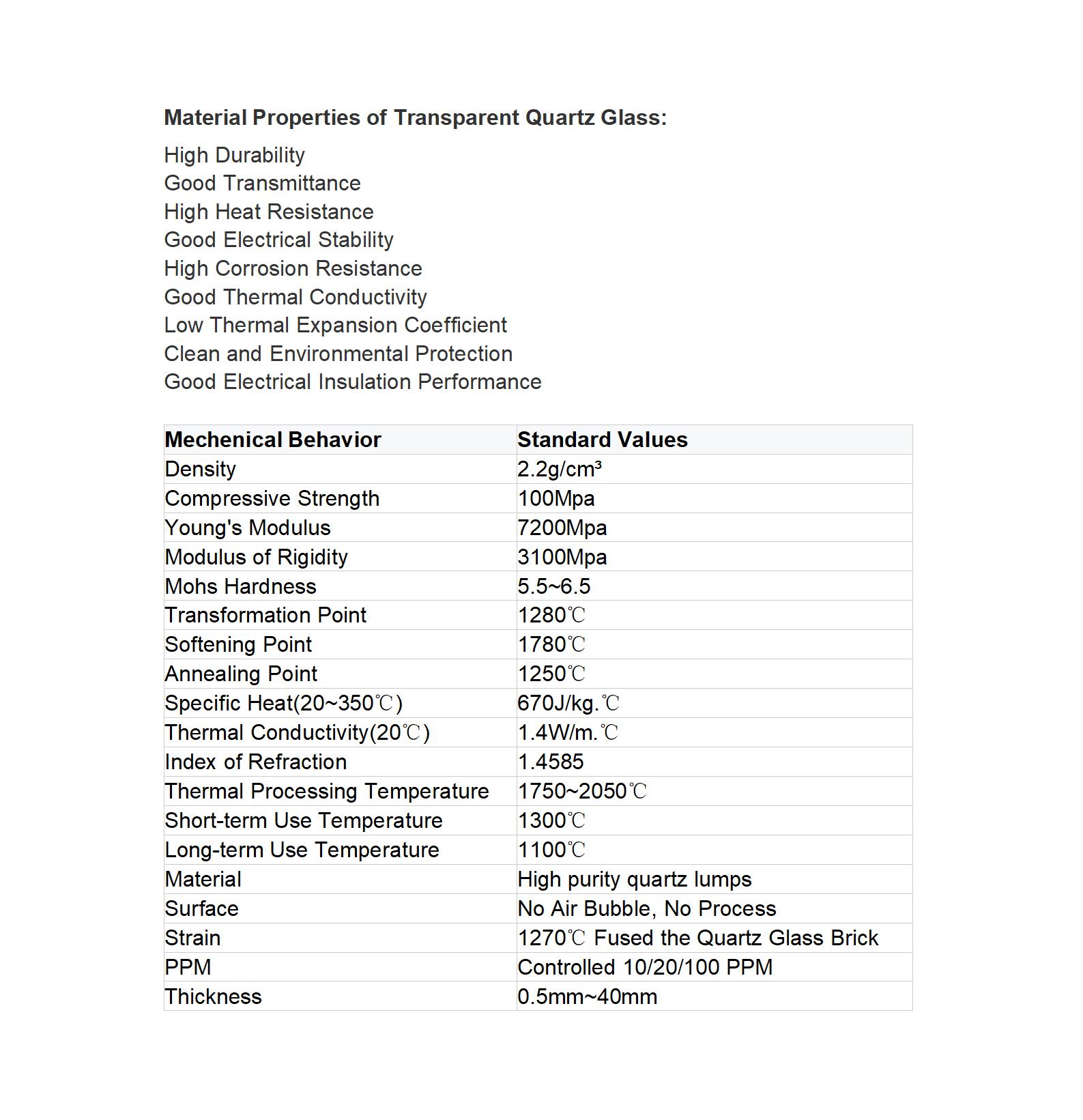T: +86-518-85528012
E: nick@luverrequartz.com
E: nick@luverrequartz.com
1st floor Runlian industrial center No. 116 QuFeng Rd., Haizhou Economic and technological development zone Lianyungang City, Jiangsu Province, China 222062
High transmittance infrared heating lamp quartz glass plate
High transmittance infrared heating lamp quartz glass plate is a type of quartz glass specifically designed for infrared heating applications.
LUVERRE quartz
99.99%
Inner with Vacuum PVC bag and then wrapped with air bubble film, outer with wooden box.
as per customer's requirement
| Availability: | |
|---|---|
High transmittance infrared heating lamp quartz glass plate
High transmittance infrared heating lamp quartz glass plate is a type of quartz glass specifically designed for infrared heating applications. This type of quartz glass has a very high transmittance for infrared radiation, so it is often used as a raw material for infrared heating tubes. In the infrared heating process, the purity of quartz glass, heating temperature, and time are all important factors to consider. High purity quartz glass can ensure sufficient transmittance, even in ordinary quartz glass, its transmittance can reach about 90%.

Infrared heating lamps usually use near-infrared short wave halogen heating tubes, which can convert 95% of electrical energy into heat energy, much higher than traditional heating methods. They can directly heat objects without heating the surrounding air, so they can also directly heat objects in a vacuum environment, avoiding the loss problem of heat transfer between the heat source and the heating object in traditional heating methods. In addition, these infrared heating lamps are made of imported and domestic high-quality quartz pipes, which are not only resistant to high temperatures, but also have good plasticity in high temperature environments, without causing pipe explosion, and have a high level of safety.

Quartz glass has a transmittance of over 90% in the visible light range, and also exhibits high transmittance in the ultraviolet (UV) and infrared (IR) regions. These characteristics make quartz glass very suitable for various optical instruments and components, such as optical sensors. The dispersion coefficient of quartz glass is relatively low, about one-third of that of ordinary optical glass, which minimizes the difference in refractive angles of light of different wavelengths during imaging, thereby reducing chromatic aberration and improving image quality. These characteristics make quartz glass an ideal material for cameras, camcorders, and other optical imaging devices.
High transmittance infrared heating lamp quartz glass plate
High transmittance infrared heating lamp quartz glass plate is a type of quartz glass specifically designed for infrared heating applications. This type of quartz glass has a very high transmittance for infrared radiation, so it is often used as a raw material for infrared heating tubes. In the infrared heating process, the purity of quartz glass, heating temperature, and time are all important factors to consider. High purity quartz glass can ensure sufficient transmittance, even in ordinary quartz glass, its transmittance can reach about 90%.

Infrared heating lamps usually use near-infrared short wave halogen heating tubes, which can convert 95% of electrical energy into heat energy, much higher than traditional heating methods. They can directly heat objects without heating the surrounding air, so they can also directly heat objects in a vacuum environment, avoiding the loss problem of heat transfer between the heat source and the heating object in traditional heating methods. In addition, these infrared heating lamps are made of imported and domestic high-quality quartz pipes, which are not only resistant to high temperatures, but also have good plasticity in high temperature environments, without causing pipe explosion, and have a high level of safety.

Quartz glass has a transmittance of over 90% in the visible light range, and also exhibits high transmittance in the ultraviolet (UV) and infrared (IR) regions. These characteristics make quartz glass very suitable for various optical instruments and components, such as optical sensors. The dispersion coefficient of quartz glass is relatively low, about one-third of that of ordinary optical glass, which minimizes the difference in refractive angles of light of different wavelengths during imaging, thereby reducing chromatic aberration and improving image quality. These characteristics make quartz glass an ideal material for cameras, camcorders, and other optical imaging devices.